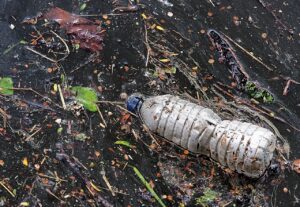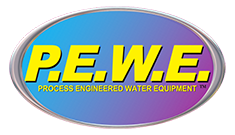
Wastewater treatment systems keep our water clean and safe. Every time you flush the toilet or drain a sink, the water travels to a treatment plant where harmful contaminants and germs are removed. Without these systems, sewage would flow into rivers or seep into groundwater, contaminating the water we use for drinking and washing. In the past, before modern sanitation, cities often suffered deadly outbreaks of waterborne illnesses. Diseases like cholera and typhoid were once common killers, but they became rare after effective water treatment and sewer systems were implemented. In places that still lack proper wastewater treatment, contaminated water and poor sanitation are linked to the spread of illnesses such as cholera, dysentery, hepatitis A, typhoid, and giardiasis. This article explores five waterborne diseases that wastewater treatment systems help prevent.
Cholera
Cholera spreads through water or food contaminated with feces. Symptoms include severe diarrhea and vomiting that can lead to rapid dehydration and death if untreated. They can start suddenly, just a half day to five days after infection. The illness leads to rapid loss of fluids. In severe cases, a cholera victim can become dangerously dehydrated, go into shock, or even die within hours if not treated.
Wastewater treatment prevents cholera by removing pathogens from sewage and preventing contaminated water from reaching drinking supplies. Modern wastewater systems filter and disinfect sewage so that bacteria are removed or killed before water is released back to the environment.
Typhoid Fever
Typhoid fever spreads through contaminated food or water. Symptoms include high fever, weakness, stomach pain, and sometimes a rash. Without effective antibiotic treatment, typhoid symptoms can last for weeks or months and lead to serious complications.
Proper wastewater treatment kills the bacteria and prevents it from contaminating water sources, effectively breaking the chain of infection. Typhoid outbreaks vanished decades ago once city sewers and water treatment became standard. However, if those systems falter during disasters, typhoid could resurge – which is why continued investment in water infrastructure is important.
Dysentery
Dysentery refers to severe diarrhea with blood, caused by bacteria. It spreads where sanitation is poor and sewage contaminates water or food. Food washed in contaminated water or handled with unwashed hands can also spread it. If people drink water contaminated with feces, they can contract dysentery. The illness can cause weakness and weight loss due to the body being drained of fluids and nutrients. In children and older adults, dysentery can rapidly become life-threatening if not treated
Wastewater treatment and proper sanitation are the primary defenses against dysentery. If sewage is kept out of drinking water and food supplies, the organisms that cause dysentery can’t easily spread. Good hygiene helps on an individual level, but nothing beats a functional sewer and water treatment system for community-wide protection.
Giardiasis
Giardiasis spreads through contaminated water, especially from animal feces. One classic scenario is drinking from a clear-looking mountain stream while hiking, not realizing that upstream a beaver or other animal has defecated in the water. The parasite can also spread through food washed with contaminated water, or by person-to-person contact. The symptoms of Giardiasis can range from barely noticeable to quite unpleasant. Symptoms include diarrhea, stomach cramps, and fatigue. The illness often lasts 2 to 6 weeks, but some unlucky folks have longer-term digestive issues even after the parasite is gone. Wastewater treatment and proper filtration prevent Giardiasis from entering public water supplies. Modern plants are designed to handle this, but they require upkeep and monitoring. As long as those systems work properly, outbreaks of giardiasis in municipal water are extremely rare.
Hepatitis A
Hepatitis A is a viral liver infection transmitted through ingestion of contaminated food or water. It’s also easily spread person-to-person in close contact settings, especially when hygiene is poor. For instance, if an infected food handler doesn’t wash their hands properly after using the bathroom, they can spread the virus. Symptoms include jaundice, fatigue, nausea, and abdominal pain. On the whole, Hepatitis A is mostly an acute illness that people survive – but it can knock you out of work or school for a long time as it’s very contagious. Wastewater treatment and disinfection prevent the virus from spreading through water systems. Maintaining and investing in wastewater infrastructure is crucial to keep hepatitis A at bay. By ensuring that sewage is treated and that drinking water is disinfected, communities can avoid waterborne Hepatitis A infections entirely.
Conclusion
Wastewater treatment systems are essential for preventing waterborne diseases by removing harmful microorganisms from sewage before it contaminates drinking water. Wastewater treatment systems have played a crucial role in virtually eliminating diseases like cholera and typhoid in developed countries, and they continue to be essential for safeguarding global public health. Continued investment and maintenance of wastewater infrastructure ensure that these deadly diseases stay in the past.


